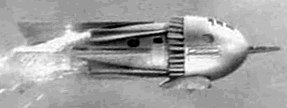

Dedicated to the Promotion and Preservation of American Muscle Cars, Dealer built Supercars and COPO cars. |
|
|
|
#1
|
|||
|
|||
|
Here are a few photos of some of the rear axle parts before I assembled them into the housing. I've used Mark Williams hardware for a long, long time, and as far as I'm concerned, it's the best you can get. Buford the Buick has one of Williams' brute strength aluminum through bolt Pro Street 9-inch Ford center sections. It's equipped with a massive pinion support and as you can see in the photos, the billet caps attach by way of through bolts rather than having threads in the bare center section.
  When you take a look at the rear, you can see how Williams' safety wires the ring gear hardware (it's all ARP pieces). This car has a 3.89:1 ring and pinion. The Detroit Locker is actually a billet steel piece. The yoke is also billet steel and setup for a 1350 Spicer universal joint (the same as used on many medium duty trucks). Aside from the street gear and the Locker instead of a spool, this is pretty much state of the art for Pro Stock a decade or so ago. They have since gone to larger ring and pinions.   These are photos of the axles I used. They're (obviously) from M-W and are large 35-spline jobs (the biggest possible with a Locker). I've used lightened axles from Mark in the past (he offers them rifle drilled with heavily milled flanges), but those are only for racecar use. In this case, the axles were drilled for Ĺ-inch and 5/8-inch wheel studs. I used the honking 5/8-inch drive studs in the car. FYI, to get all of this stuff to fit with a conventional style backing plate (I used 9-1/2-inch early GM midsize parts), the center bore of the plate had to be milled. The axle register on the brake drum was milled (larger) and obviously, the wheel stud holes in the drums had to be enlarged. I'm now on a first name basis with at least two machine shops <g>.    A few folks have asked me if the car actually has an interior <g>. Yes it does! This is a photo of it with the instrument panel removed. The second shows the back seat and the third is of the door panel. Iím pretty sure the interior is what most would consider to be in pristine condition. There are still places where the factory shipping plastic wasnít completely removed.    I removed the console because I wanted to run one of these shifters. It's built by Precision Performance. They're big in drag racing with air shifters. I had them build me one in a more conventional hand shift mode. I had the carpet section made up to cover the floor where the console once lived. This little mod actually proved trying. Plan "A" was to simply swap the original carpet for a repro from the, uhm, well known restoration carpet place (since GM cuts the carpet under the console). SoÖ..I stripped the seats out of the car and ordered the carpet and it eventually showed up. As soon as I opened the box I knew I was in trouble. It was (a whole bunch) more brown than GM Carmine. Then I put it in the car. The fit was worse than horrible. Plan "B" was to create a removable center section. After a couple of tries, the upholsterer got it right. There are four snaps used to hold it in place. By removing a snap, there's access to the cable or to route wiring.  Here are a couple of shots of the instrument panel. The panel surrounding the radio is a cool aftermarket piece that allows for the heater delete. I decided to keep the factory AM-FM and the cigar lighter. As you can see, the cluster is out of the car.   At this point, I've reassembled the dash but the actual instrument cluster still isn't installed. You would not believe how much plastic (and how many small screws) is involved in these dash assemblies. Back in the day, I wouldn't have wanted to be the squeak and rattle guy at the Buick dealership. It must have been a nightmare, but I'm getting off topic. I opened up the OEM dash harness connector and peeled out the wires I'd need for a new instrument panel. I used three weatherpack connectors Ė the big one does everything except for the turn signals. Each signal indicator has it's own weatherpack. I use a lot of weatherpacks in cars. Once you get the hang of assembling them (MSD sells the necessary tools and weatherpack parts), it's pretty easy. I like them because they make for extremely reliable connections.    This is a look at what I'm installing. I built this setup with a custom aluminum panel (anodized black) and eight gauges from SpeedHut (Revolution Gauges). Included in the mix is a tach, speedo, fuel level, voltmeter, oil pressure, water temperature, transmission temperature and fuel pressure gauges. These are all stepper motor instruments. That allows them to be super shallow and of course, to have 270-degree sweeps like a mechanical gauge. The wiring harness assemblies for the senders are similar to the mil spec stuff you see on aircraft. There are ton of options available too. For example, the tach has a three-stage shift light. There are "low" and "high" warnings on some of the instruments. The odometer is a digital readout. Gauge bezels have a polished stainless look and they match the trim in the Buick office. I chose a cobalt blue back light package and traditional red pointers (you can select all of this stuff). It's uber cool, but I screwed up. I had it all assembled, but forgot to order turn signal indicators and a high beam indicator in the speedometer. So that's why it's not in the car. I'm waiting for a speedo with those features (supposedly, in transit).  Once the cluster is completely installed, I'll shoot some photos and add them here. I should track down some fuel system pix too. I sweated some details on that and I think it came out pretty nice too. And by the way, thanks again for letting me indulge myself here! In the meantime, Happy New Year! See ya' next year. Wayne Scraba |
|
#2
|
|||
|
|||
|
I figured Iíd share the fuel system build on Buford, and maybe at the same time give you some insight into how I assemble AN hose and hose ends. I picked up my first piece of AN hose (and hose ends) in 1978 and Iíve been using it ever since. Over those years, Iíve managed to pickup a tip or two (and theyíre included below). None-the-less, hereís how I build and test fuel lines: The first step is cut the line. A fine tooth hacksaw is what most recommend, but I like this better. Itís a cut off wheel on a 4-1/2-inch angle grinder. It works super slick and leaves fewer stray wire ends. By the way, I wrap the hose tightly with duct tape, and then clamp it before making the cut.
 Next, tap the junk out of the cut hose. I usually give it a blast of compressed air too.  Push on the hose end socket. Sometimes you have to twist it a bit to get the hose to seat correctly inside the socket. This is where a nice clean, square cut on the hose can pay dividends.  I always mark the hose behind the socket before assembly. The reason is the socket (and consequently the hose end) can back out when you thread in the hose end nipple. Itís a rare occurrence, but it does happen once in awhile.  I really like assembling hose with Aeroquipís soft jaws. They have a magnetic insert and you simply drop them onto your bench vise. Slip the hose with the socket into the vise jaws, leaving maybe 1/16-inch or so of the socket above the vise jaws.  You should lube the threads of the nipple carefully before assembly. This is one place where you shouldnít be cheap with lubricant. The best lube Iíve found is from the folks at Aeroquip. Itís designed just for this and definitely makes assembly easier.  Thread in the hose nipple and tighten. Donít use an aluminum hose wrench for this job! Aluminum hose end wrenches are designed to tighten completed hose assemblies to aluminum adapters. If you use it to assemble a hose end, the jaws will flex (open). Itís a quick way mar the fittings. I use a tight fitting Mac open end wrench for this job. I tighten the hose nipple to the point where the respective hexes are aligned and the gap between the last nipple hex and the socket is no larger than a fingernail.  Hereís the finished hose end. I always check to be sure the hose end hasnít backed out (against the mark I initially made).  This is the finished hose assembly. What you see here are -10 AN fittings and hose. Other sizes and shapes (bent tube and so on) are similar to work on. The only exceptions are hose ends for Teflon line. I donít like making those at home, and prefer to use crimped ends for those applications.  Not done with the hose end yet. Next, I install a set of Earlís test fittings (note the use of aluminum wrenches Ė this is where you use Ďem).  At this point, I charge up the completed hose with twenty of so pounds of air.  Then itís off to the sink to test for leaks. See the bubble? This hose end was simply leaking at the flare (I didnít tighten the test fitting enough). But itís still better to test this stuff before it goes on the car.  The next part of my fuel system was the gas tank. I bought (actually, my wife bought me) a new Turbo Buick gas tank. The old one was perfect. I just donít like having fab work done on a used gas tank. Additionally, the repro tanks have metal internal baffles around the sump. The OE Buick Turbo tanks have plastic baffling. One of the steel AN bulkhead fittings is for the pickup (the larger -10 size). The smaller fitting on the left is for the pump by-pass (return line).  I built this -10 AN hose to go inside the tank to the pickup. The end you canít see is slash cut. Internally, the hose is captured inside the tank baffling (by peening one baffle over another) so that the slash cut end resides in the rear section of the sump.  See the string? See the duct tape surrounding the sender hole in the tank? My arm just fit in the hole, but it was so tight I couldnít risk losing the wrench inside the tank (the baffling is pretty convoluted). Since the AN wrench is aluminum, using a magnet to fish it out wouldnít work. So I tied a string to it and if (when) I dropped it, I could fish it out. The duct tape around sender hole saved me from going to the local clinic for, uhm, personal repairs <g>. Itís a bit of a reach to get to the fitting, but I got it done.  This is the pump I used. Itís a bad boy setup from the folks at MagnaFuel. In reality, MagnaFuel is one of two (reliable) companies that are used by Pro Stock teams for fuel delivery (Weldon is the other one). MagnaFuelís stuff is like jewelry. If you fondle it, youíll know what Iím talking about. Anyway, the pump is a flow through model. That means the fuel passing through cools the pump, allowing it to function full time (continuous duty). Itís actually engineered for fuel injection use, but can be adapted for a carburetor with a different regulator and by-pass valve. As you can see by the tape measure, itís one honking fuel pump.  Hereís the by-pass setup (stainless steel). Thereís a big needle inside that operates much like a carburetor bowl needle. Reach a specific fuel pressure level and fuel is bypassed back to the tank. What this does is to reduce the aeration in the fuel by a considerable margin. Fuel pressure is very stable with this setup (you donít see surges that you see with other pumps). By the way, these pumps can pull a prime; so mounting it above the gas tank isnít an issue.  The folks at MagnaFuel recommended that I use two filters Ė one before the pump and one after. Like the pump, these are massive. They have internal filter elements that are easily cleaned or replaced.  Youíve probably seen this view before. Itís the mounted pump and pre-filter installed under the rear axle kickup. Given the size of the pump and filters (not to mention the inlet lines are -10 AN), packaging was an issue. This was the only likely spot, but I was really concerned about ripping the sheetmetal due to the weight of all of the components.  After looking through several aircraft airframe repair manuals I have on hand, I figured the solution was to use a couple of doubler plates Ė one for the fuel pump and one for the filter. The idea here is to distribute the load and prevent the pump and filter from tearing the kickup sheetmetal. The doublers were fabbed to size, and then installed with -3 AN fasteners.  This is a birdís eye view of the trunk. You can see the filter and pump doublers on the kickup. I can cover them with a trunk mat, but I think they look good they way they are.  From the pump, fuel goes forward to the after-filter shown here. I installed it on the passenger side frame rail, just ahead of the lower trailing arm pickup point. The clamp is an aircraft fuel pump piece from Weldon. Part of my plan was to make both filters accessible. Thereís no point hiding this stuff, but I wanted it away from the scrub line.  The fuel line is -8 AN out of the pump. I routed the line inside the OEM frame rail channel. Itís clamped by way of Adel aircraft clamps, and bolted to the channel by way of short -3 AN fasteners. I usually measure the distance between clamps and make them all equidistant. I think it makes it look nice under the car <g>.  The fuel line wraps over the frame rail near the leading edge of the door. Here it runs upward in between the fender and the inner fender. I installed a -8 AN bulkhead fitting on the inner fender. That allows the fuel line in the engine compartment to be easily removed and installed.  This is the MagnaFuel high flow regulator. It can be installed right on the engine. Moroso has recently released a bracket that allows this regulator to be installed on the carburetor (between the respective studs on the passenger side). In the case of the Buick that means a relatively short -8 AN line can run from the fender to the regulator. Like other components from MagnaFuel, itís a gorgeous piece of machining.  And thatís it. I think Iíve covered most of the construction, at least in abbreviated form. I also hope didnít mind me sharing these vignettes of Buford the Buick on your website. Thanks folks! Wayne Scraba  |
|
#3
|
|||
|
|||
|
Wow!!..........Talk about "Neet" how to do things
 .......very Informative Wayne .......very Informative Wayne  ......Great Job!!! ......Great Job!!!   ......Again.......Talk about attention to Detail ......Again.......Talk about attention to Detail  Ken 
__________________
 The Best things in life......Aren't Things |
|
#4
|
|||
|
|||
|
Hey man...thanks for the Kudo's!
Wayne Scraba  |
|
#5
|
|||
|
|||
|
Wow, I really admire your attention to detail.
You're quite the craftsman.
__________________
1968 Camaro Ex-ISCA Show Car - Sold  On The Lookout For My Next Classic... John 10:30 |
|
#6
|
|||
|
|||
|
I'm blushing....seriously.
 Pat Ganahl once stated (wrote) somewhere that he had a sign in the shop or maybe a saying where "no job is worth doing unless you can do it twice". I can relate....easily! <g> Pat Ganahl once stated (wrote) somewhere that he had a sign in the shop or maybe a saying where "no job is worth doing unless you can do it twice". I can relate....easily! <g>None-the-less, I am glad you like it and I hope I gave a few of you some info and ideas you can copy. Thanks again!!! Wayne Scraba |
 |
| Thread Tools | |
| Display Modes | |
|
|